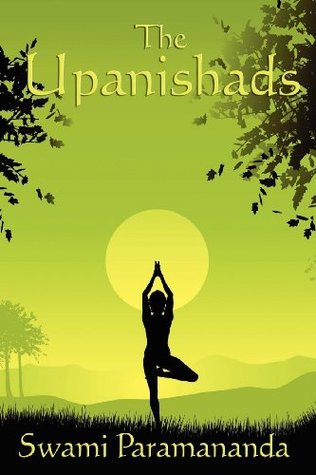More on this book
Community
Kindle Notes & Highlights
Upanishads are known as the Vedanta, that is, the end or final goal of wisdom (Veda, wisdom; anta, end).
Vanaprasthas (those who, having fulfilled all their duties in the world, had retired to the forest to devote themselves to spiritual study).
Maha-Vakyam or “great sayings”:—Tat twam asi (That thou art) and Aham Brahmasmi (I am Brahman).
Every Upanishad begins with a Peace Chant (Shanti-patha) to create the proper atmosphere of purity and serenity.
The Brahmanas stand for spiritual strength, the Kshatriyas for physical strength, yet both are overpowered by His mightiness.
Ruler of Death represents the Self as the lord of this chariot of the body. The intellect or discriminative faculty is the driver, who controls these wild horses of the senses by holding firmly the reins of the mind. The roads over which these horses travel are made up of all the external objects which attract or repel the senses:—the
Beyond the senses are the objects, beyond the objects is the mind, beyond the mind is the intellect, beyond the intellect is the great Atman.
Beyond the great Atman is the Unmanifested; beyond the Unmanifested is the Purusha (the Cosmic Soul); beyond the Purusha there is nothing. That is the end, that is the final goal.
A wise man should control speech by mind, mind by intellect, intellect by the great Atman, and that by the Peaceful One (the Paramatman or Supreme Self).
What is here (in the visible world), that is there (in the invisible); he who sees difference (between visible and invisible) goes from death to death.
In the sight of true wisdom, there is no difference between the creator and the created. Even physical science has come to recognize that cause and effect are but two aspects of one manifestation of energy.
He also answers the question put by Nachiketas as to what happens after death, by declaring that no real change takes place, because the Soul is ever the same.
This human body is called a city with eleven gates,
where the eternal unborn Spirit dwells. These gates are the two eyes, two ears, two nostrils, the mouth, the navel, the two lower apertures, and the imperceptible opening at the top of the head. The
No mortal lives by the in-coming breath (Prana) or by the out-going breath (Apana), but he lives by another on which these two depend.
As the sun may shine on the most impure object, yet remain uncontaminated by it, so the Divine Self within is not touched by the impurity or suffering of the physical form in which it dwells, the Self being beyond all bodily limitations.
a man is not able to know Him before the dissolution of the body, then he becomes embodied again in the created worlds.
Higher than the senses is the mind, higher than the mind is the intellect, higher than the intellect is the great Atman, higher than the Atman is the Unmanifested.
There is a vast difference between the manifested form and That which is manifested through the form.
Knowledge means union between subject and object. To gain this union one must practice, theory cannot help us.
He who thinks he knows It not, knows It. He who thinks he knows It, knows It not. The true knowers think they can never know It (because of Its infinitude), while the ignorant think they know It.
There are different names and forms which represent certain personal aspects of Divinity, such as Brahma the Creator, Vishnu the Preserver and Siva the Transformer;
The Upanishad is based on tapas (practice of the control of body, mind and senses), dama (subjugation of the senses), karma (right performance of prescribed actions). The Vedas are its limbs. Truth is its support.


